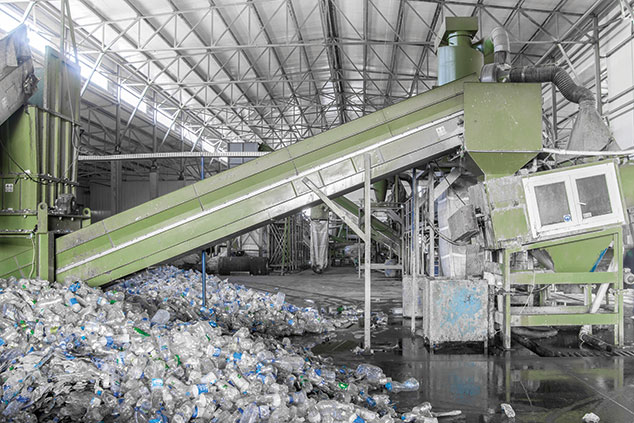
Waitrose is banning disposable cups. The government is imposing a deposit-return scheme on plastic bottles. Is Britain becoming a green utopia? The reality is more messy, says Alex Rankine.
What happened?
At the end of March, the British government announced plans to bring in a deposit-return scheme (DRS) for plastic, glass or metal drinks bottles. The scheme will see shoppers paying a small extra charge (between 8p and 22p) every time they buy a single-use product. The deposit is given back to the consumer on return of the container. Consultations on the DRS are still at an early stage in the UK, so we don’t know the details yet, but a scheme introduced in Germany in 2003 uses “reverse vending machines” at supermarkets to facilitate the easy return of bottles.
Between 97% and 99% of non-reusable bottles are now returned by German consumers, and the scheme has fostered an entire economic sub-sector based on recycling, says Philip Oltermann in The Guardian. “Hundreds of Pfandsammler or ‘deposit collectors’ – many of them pensioners or people in precarious living conditions – roam the streets with trolleys… searching bins for plastic bottles they can take to the next supermarket.”
Is this part of a trend?
The DRS is the latest measure intended to reduce the amount of waste that Britain consigns to landfill. It follows the 5p charge for supermarket plastic bags introduced in October 2015, which has been credited for reducing bag use by more than 83%, says Wired.
Public awareness of recycling problems is growing, with disposable coffee cups coming under particular scrutiny – roughly 2.5 billion coffee cups are thrown away each year and almost none of them are recycled, because of the plastic lining they contain. Many coffee shops now offer discounts for customers bringing reusable cups, but this week supermarket Waitrose announced that it would stop using disposable cups in its stores this year – a decision that it says will save 52 million cups. Still, Britain’s record on recycling is mixed.
How much do we recycle now?
Overall, the Department for Environment, Food and Rural Affairs (Defra) reports that in 2014, 43% of total UK waste ended up being recycled or recovered, and almost 25% went to landfill. Most UK packaging waste is now recycled. Latest figures show that 71.4% of such refuse was reclaimed in 2016, with 81.9% of paper and cardboard, 67.1% of glass and 44.9% of plastic being recycled, comfortably above European targets.
Where Britain underperforms is on household recycling rates, which have been stuck at slightly above 40% (currently 44.6%) for several years. It now looks unlikely the UK will hit the EU’s target of 50% recycling by 2020. Nevertheless, this month the government signed up to an even more ambitious EU recycling target of 65% by 2035, which it has vowed to support despite Britain’s imminent exit from the European Union.
Which places perform best?
Wales has the highest recycling rate of any of the UK’s constituent countries, recycling 57.3% of household waste. The country’s success has, at times, depended upon punitive measures, including limiting residents to two black bags a fortnight and even levying fines on those who refuse to sort their rubbish. At the other end of the scale, councils in London have done badly, with residents in Newham saving just 14% of their waste. The figure for the capital as a whole is only 33%, apparently because the city’s high-density housing makes recycling programmes less effective than elsewhere.
What happens to Britain’s waste?
Just because waste is recycled doesn’t mean that it stays on our shores. Britain exports about 15 million tonnes of paper, metals, plastics and glass for recycling abroad each year, typically to Asian countries where processing costs are lower. A total of 55% of recycled paper and more than 25% of plastics used to go to China. However, the country’s imposition of a ban on the import of such waste from January this year has given British recycling authorities a headache as they currently lack the capacity to handle so much recycled material domestically.
So is recycling worth it?
A recycling utopia doesn’t come cheap – the German DRS is estimated to spend €793m a year on maintenance. However, recycling saves scarce resources and cuts millions of tonnes of carbon emissions in the UK each year – estimated to be the equivalent of taking anywhere between 3.5 and 5 million cars off the road. The profitability of recycling and reusing waste can vary according to wider economic factors.
When oil prices collapsed a few years ago, the recycled plastics market was one of the casualties – cheaper oil meant it was more profitable to make new “virgin plastics” than to reprocess second-hand recyclables, which require cleaning and often yield a less versatile final product. Nevertheless, the energy saved by reprocessing used metals and other materials can be substantial – recycling an aluminium can requires 95% less energy than mining and processing the ore to make a new one.
How valuable is rubbish?
The UK’s muck yields a substantial amount of brass. In 2015 Defra estimated that the UK waste sector added £6.8bn in gross value to the economy and supported 103,000 jobs. A tonne of aluminium is worth well north of £1,000 and even used newspapers can fetch £80 per tonne. There is also renewed interest in using “enhanced landfill mining” to extract valuable metals and to generate power.
Discarded smartphones can contain 25 times higher concentrations of gold than gold ore, though of course they don’t all come clumped together. In total, the world’s electronic scrap in 2016 alone was thought to be worth about €55bn, much of it lost to landfill – to the detriment of both the economy and the environment.